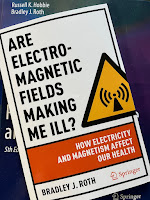 |
| Schoen et al. (2021) “Radiology in Our Changing Climate: A Call to Action,” JACR, 18:1041–1043. |
Just as early radiologists did not understand the dangers of high radiation doses, today we are naive to imaging’s carbon footprint and its implications for public health. The world’s temperature has already risen more than 1 °C from preindustrial levels. We see the effects of climate change across the world, from extreme wildfires and stronger storms to rising sea levels and ocean acidification. If we continue with “business as usual,” children born today will experience a planet that is 4 °C warmer than in preindustrial times and the associated health consequences. These consequences are disproportionately felt by children, the elderly, those with preexisting conditions, and outdoor workers. As our climate crisis worsens, radiologists must urgently consider our role in climate change.According to Schoen et al., the health care system may be responsible for nearly ten percent of American’s greenhouse gas emissions. TEN PERCENT! Yikes. They suggest that radiology departments are “likely a major contributor to energy use within hospital systems.” They identify four ways to address the energy use in radiology.
Imaging Exams
Schoen et al. claim that “over a year, the energy use of one CT [computed tomography] scanner was comparable with that of 5 four-person households, and the energy use of one MR [magnetic resonance] scanner was close to that of 26 four-person households.” I always thought MRI was the ideal imaging method, but it turns out it’s an energy hog, contributing significantly to radiology’s carbon footprint. There are few easy ways to reduce energy use; perhaps use ultrasound more when appropriate and adopt new technologies that shorten imaging time.Scanners in the Off State
Imaging systems use a lot of energy even in standby mode. You must keep the superconducting coil of a MRI scanner cold all the time, not just when it’s imaging. Solutions are not simple. Schoen et al. suggest using scanners 24 hours a day (patients won’t like that) and working with manufacturers to find ways of reducing energy use when a scanner is not operating.Wasteful Habits
We have to cut the waste in radiology departments. Simple improvements would be to turn off computers and picture archiving and communication systems (PACSs) at night or when not in use, and reducing excess packaging. I support these easy changes, but wonder if they’ll have a major impact on our carbon footprint.Energy Sources
Alternative energy sources—including ones like wind, solar, and nuclear—will reduce greenhouse gas emissions. This is something individual radiologists, or even radiology departments, have little control over, but if major health care systems demand cleaner energy sources they might be able to influence regional utilities and politicians.Conclusion
Schoen, McGinty, and Quirk discuss an important issue, and I thank them for raising it. Their call to action must be addressed by radiologists in collaboration with hospital administrators, academic researchers, and medical device companies. All of us—including the past, present, and future patients needing radiological services—must advocate for reducing our impact on the climate.
I’ll give Schoen et al. the last word by quoting the eloquent final paragraph of their publication.
Radiology faces many challenges, from improving diversity to changes in reimbursement in a budget-neutral system. Addressing climate change is an opportunity to protect vulnerable populations and increase our value in the health care system. Initiatives to address climate change align with the ACR’s [American College of Radiology’s] core purpose of serving both patients and society. Our field has made great strides in patient safety by decreasing radiation doses. Similarly, through our technological expertise and awareness, we can decrease our carbon footprint, with the ultimate goal of mitigating climate change and preventing a looming public health crisis.
Listen to a podcast of Julia Schoen discussing sustainability and radiology.
https://www.youtube.com/watch?v=_66M2PgnTxA
The group “Radiologists for a Sustainable Future” is on Twitter. Follow them at
@Rads4SF.





